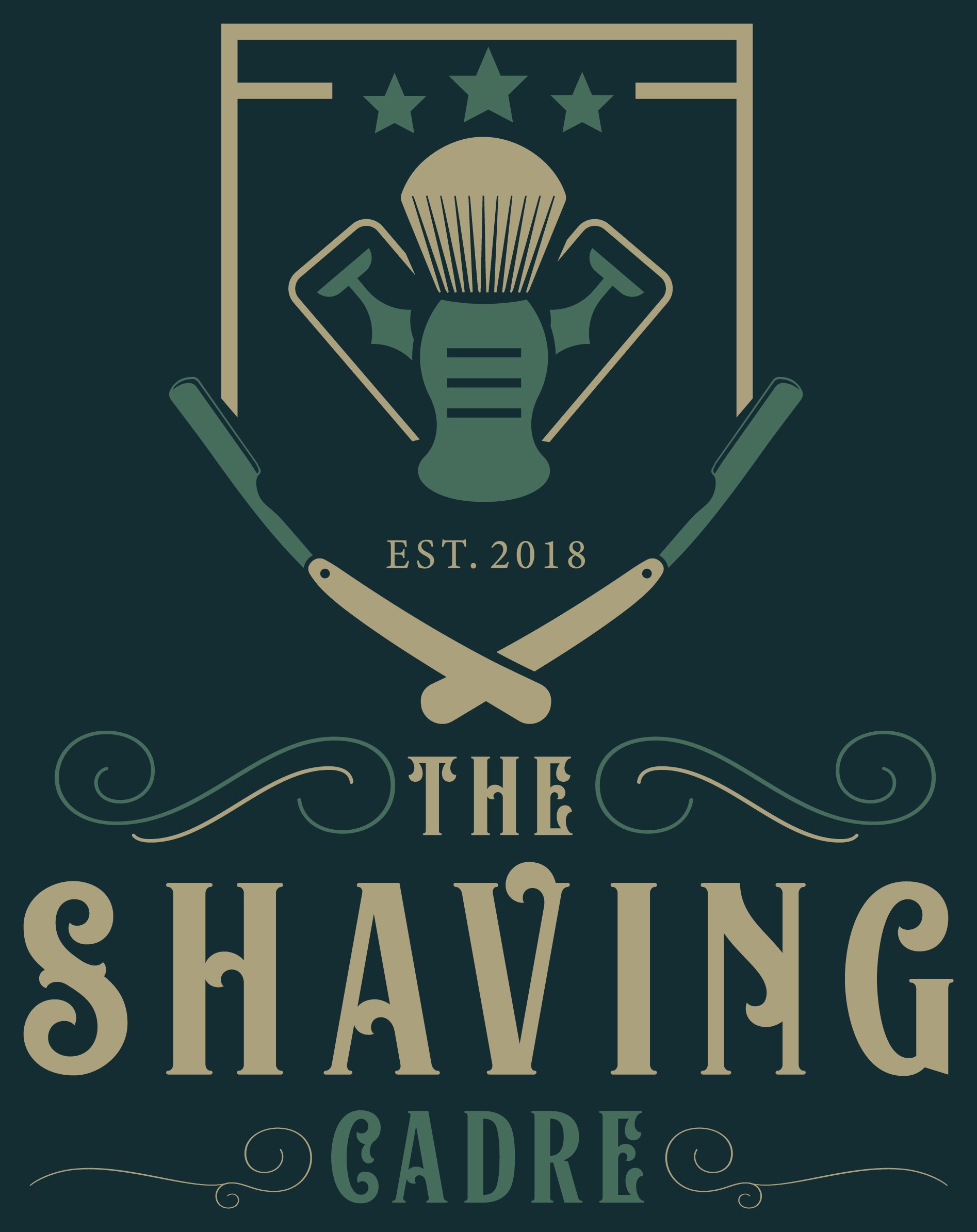My last work on stones is black ark, then Naniwa 12K, then the abrasive charged balsa progression (Dovo/Herold pastes: green, red, black - then cBN emulsions .5, .25, .1 micron sizes. I use a flat roo bench for the final draw on the edge.@Bill M @supertrunker Do you use a convex shaped finisher ? From the posts I believe that the final finisher is a flat hone. If yes, how does this work out ?
The Shaving Cadre
You are using an out of date browser. It may not display this or other websites correctly.
You should upgrade or use an alternative browser.
You should upgrade or use an alternative browser.
Convex Hones and Concave Bevels Discussion
- Thread starter Bill M
- Start date
-
- Tags
- convex hones
supertrunker
Shave Member
In simple terms once upon a time before modern manufacturing people realized that in order to sharpen hand tools like planes, chisels and knives that the fastest way of doing so was to use a wheel and that makes a concave edge in the tool. To be clear about this, imagine i rest my razor blade on the bridge of your nose with the edge facing you. Then i attack it from the bottom with a grinding wheel - i'm removing metal behind the bevel that is on your nose!
The bevel never changed, but the flexibility of the blade did as there's less steel. That new flexibility is what makes the difference.
Shaping stones that way is an attempt to replicate those wheels.
And 6 hours is nothing. They are hard work to shape, so i'm interested to see what Bill's Norwegian pal thinks.
i'll send him mine! They have long winters there.
T
The bevel never changed, but the flexibility of the blade did as there's less steel. That new flexibility is what makes the difference.
Shaping stones that way is an attempt to replicate those wheels.
And 6 hours is nothing. They are hard work to shape, so i'm interested to see what Bill's Norwegian pal thinks.
i'll send him mine! They have long winters there.
T
The winters here in Norway are loooong, dark andIn simple terms once upon a time before modern manufacturing people realized that in order to sharpen hand tools like planes, chisels and knives that the fastest way of doing so was to use a wheel and that makes a concave edge in the tool. To be clear about this, imagine i rest my razor blade on the bridge of your nose with the edge facing you. Then i attack it from the bottom with a grinding wheel - i'm removing metal behind the bevel that is on your nose!
The bevel never changed, but the flexibility of the blade did as there's less steel. That new flexibility is what makes the difference.
Shaping stones that way is an attempt to replicate those wheels.
And 6 hours is nothing. They are hard work to shape, so i'm interested to see what Bill's Norwegian pal thinks.
i'll send him mine! They have long winters there.
T
supertrunker
Shave Member
Having moved from Europe to Texas in the hope of avoiding bitterly cold winters, i sure misjudged that and last year was brutal. i had to resort to hugging the wife to keep warm.
So then my neighbor was annoyed at me, since he'd married her.
If it was nonstop sun here from April to August, we'd be burned to a cinder!
T
sorry for the huge type, but i really like to not have to wear my glasses when i don't have to.
So then my neighbor was annoyed at me, since he'd married her.
If it was nonstop sun here from April to August, we'd be burned to a cinder!
T
sorry for the huge type, but i really like to not have to wear my glasses when i don't have to.
Got another lapping plate. The vender had received some of these beyond his specs and had them for sale at 50% off. I was hoping to get one more curvy than my original on the 9” dimension. This one is not far from the original, maybe just a shorter radius on the 11” dimension
A couple more arks I am thinking about exactly what I want to do with them.
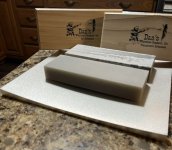
A 20x-40x stereo wide field scope to better see where I am intersecting my compound bevels and how the edge is.
Oh, and a 7/8 Thiers Issard. These 7/8 TI pieces are one of the best production razors made today, IMO.
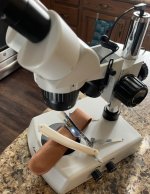
A couple more arks I am thinking about exactly what I want to do with them.

A 20x-40x stereo wide field scope to better see where I am intersecting my compound bevels and how the edge is.
Oh, and a 7/8 Thiers Issard. These 7/8 TI pieces are one of the best production razors made today, IMO.

Ok. Here you goWorking on a way to make a shorter radius stone.
Got some diamond plates.
@JPO, John I could use some advice from your experience. Thanks.
Just turn off the sound..
It takes allot more time with harder and larger stones with a smaller radius. The diamond plates makes it more efficient at least.You make it look sooo easy.
I‘m really hoping those diamond plates take some time off shaping those new arks I got.
I really want to get that new soft ark down to a radius of 1.25-1.5 meters. We will see.
This was just my way.
As you see in the video Bill, you just need to rotate the stone on the plate. Then you manually shape the diagonal "ridge lines" with sand paper. You have that fancy shaping plate. That would probably work better for this step. The final step is to use a concave dressing stone to either maintain, and/or do some final adjustments.
The honing is ideally a three step process. This just shows that this can also be quite simple if you do not need the extra flexibility. If you use a fast synthetic stone for the last step, you will probably end up with that shape overtaking the bevel. That is why i prefer to use a hard slow stone for that last step. Arkansas stones are perfect for this, in my option at least.
The stone used was a Les Lat hybrid coticule. The hybrid side was flat. My intention was just to show how i shape some of my stones. The honing part is probably covered much better by others.
Here is how you can calculate the shimming required to get the radius you are after. I probably ended up with a radius of about 4-5 meters.
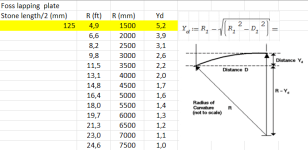
The honing is ideally a three step process. This just shows that this can also be quite simple if you do not need the extra flexibility. If you use a fast synthetic stone for the last step, you will probably end up with that shape overtaking the bevel. That is why i prefer to use a hard slow stone for that last step. Arkansas stones are perfect for this, in my option at least.
The stone used was a Les Lat hybrid coticule. The hybrid side was flat. My intention was just to show how i shape some of my stones. The honing part is probably covered much better by others.
Here is how you can calculate the shimming required to get the radius you are after. I probably ended up with a radius of about 4-5 meters.

Last edited:
supertrunker
Shave Member
My latest thinking is that a shaping plate and diamond sandpaper might be nice for those smaller radius hard stones. At least the good thing about them is they keep their shape for ages.It takes allot more time with harder and larger stones with a smaller radius. The diamond plates makes it more efficient at least.
This was just my way.
i've been happy using synthetics for the larger radius step and they take no time to prepare.
Fascinating video all the same.
T
My Dovo test razor was honed on a convex 800 grit stone followed by an translucent black Arkansas in one step.
The edge was jointed. Then it was honed on a convex 800 grit Naniwa pro. The goal was to stop before the coarse striation reached the apex. Notice the transition line.
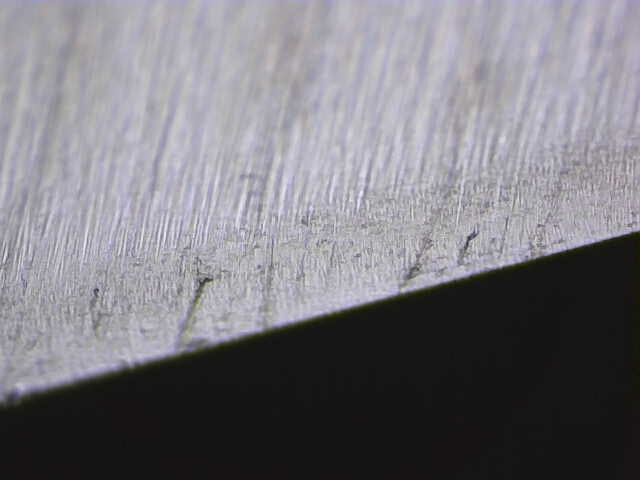
The next step was to hone the lower part with the Arkansas that had a larger radius.
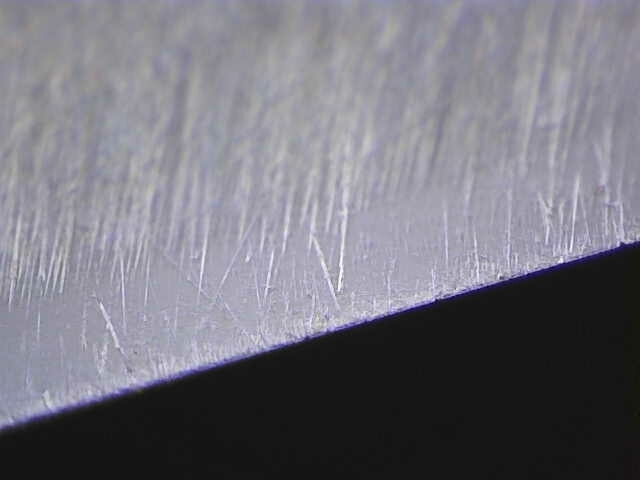
The final step was to use the flat side of the Arkansas stone to finalize the edge. The transition line have moved up a little and
the final edge is burnished.

The edge was jointed. Then it was honed on a convex 800 grit Naniwa pro. The goal was to stop before the coarse striation reached the apex. Notice the transition line.
The next step was to hone the lower part with the Arkansas that had a larger radius.
The final step was to use the flat side of the Arkansas stone to finalize the edge. The transition line have moved up a little and
the final edge is burnished.
Nice to see you are making progress with the diamond plates.
Just a tip for cleaning you 20k. I use a Magic Eraser sponge. No detergent is needed. This removes swarf from synthetic stones better then anything i have tried (except for lapping).
I use this on my translucent black arkansas stone to clean up imbedded swarf. This speeds up the stone. The sponge is white, so you can really see that the stone is taking off some metal.
